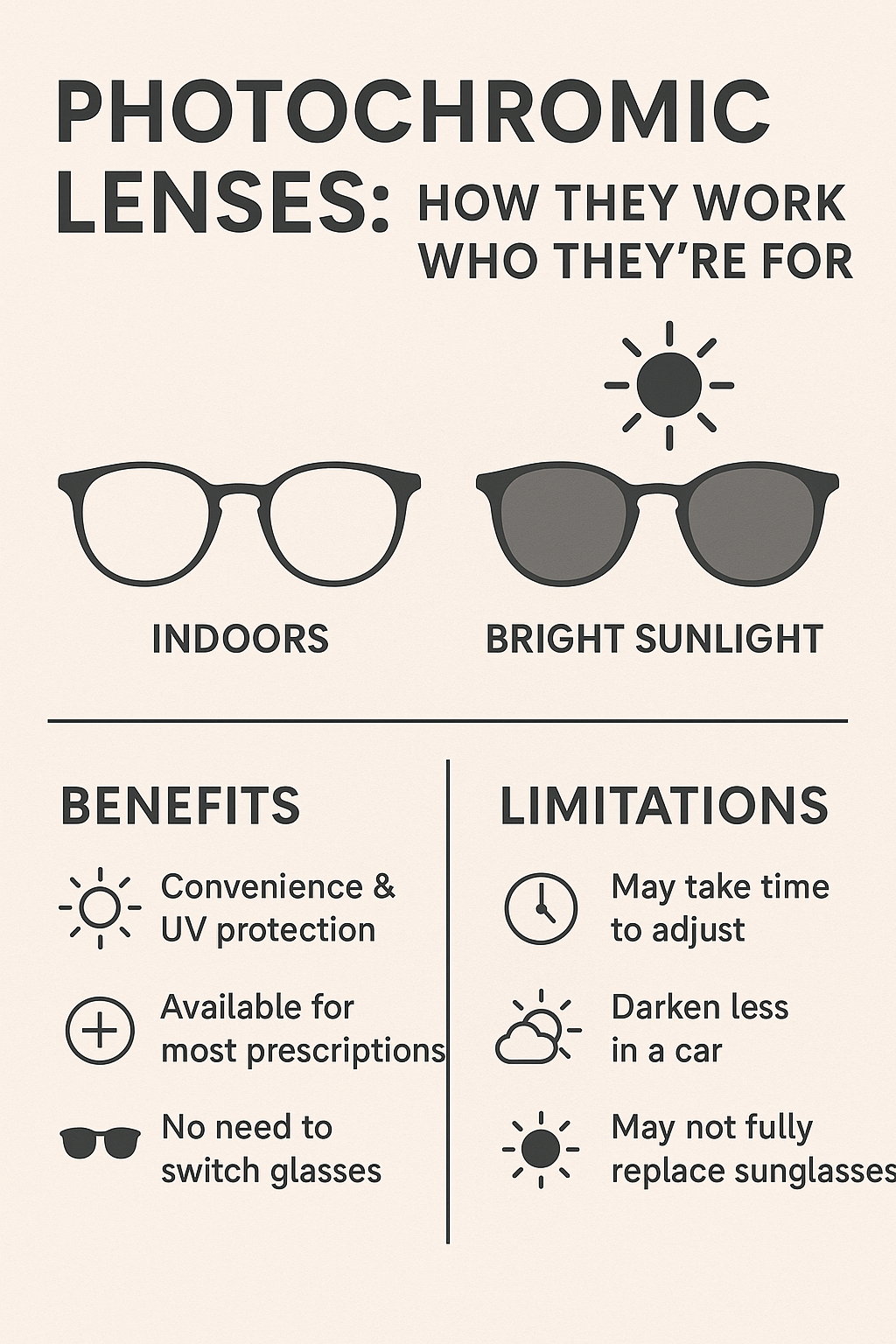🌞 Photochromic Lenses: How They Work & Who They’re For
(Spoiler: They’re Not Just for Sunglasses Lovers)
If you’ve ever wished your glasses could magically darken in the sun and lighten indoors—that’s exactly what photochromic lenses do. Also known as transition lenses, these smart lenses adapt to changing light conditions to help protect your eyes and reduce strain.
But how do they really work? And are they right for everyone? Let’s break it down.
🧪 How Photochromic Lenses Work
Photochromic lenses are treated with special molecules that react to UV light:
-
Indoors: No UV exposure = lenses stay clear.
-
Outdoors: UV exposure triggers a chemical reaction that darkens the lenses.
-
Back indoors: As UV light disappears, the lenses gradually return to clear.
Modern photochromic technology works faster and looks better than it did years ago—but it’s still affected by temperature, light intensity, and even the type of lens material.
✅ Benefits of Photochromic Lenses
-
Convenience: One pair of glasses = indoor and outdoor use. No need to switch to sunglasses.
-
UV Protection: Blocks 100% of UVA/UVB rays, which helps reduce the risk of cataracts and other eye conditions.
-
Eye Comfort: Reduces glare and squinting in bright sunlight.
-
Cost-Effective: Eliminates the need to purchase a separate pair of prescription sunglasses.
⚠️ Limitations to Keep in Mind
-
They don’t work well in cars. Most windshields block UV rays, so lenses may not darken while driving.
-
They take a few minutes to fully adjust—especially when going from cold outdoor air to a warm indoor space.
-
They’re not as dark as full sunglasses in very intense sunlight.
🔍 Tip: If you need glasses specifically for driving in bright conditions, consider adding a separate pair of polarized prescription sunglasses.
👤 Who Should Consider Photochromic Lenses?
Photochromic lenses are a great option for:
-
People who go in and out of buildings frequently (teachers, delivery drivers, commuters)
-
Kids and teens (built-in sun protection!)
-
Anyone with light sensitivity or eye strain
-
People who want to simplify their eyewear without sacrificing comfort
They may not be ideal for:
-
People who spend a lot of time driving
-
Those who want maximum darkness outdoors (polarized sunglasses are better for that)
💬 Real-Life Tips
-
Store them at room temperature—cold weather can slow reaction time.
-
Ask for anti-reflective coating to cut glare and improve clarity.
-
Choose higher-index lens material (1.61 or 1.67) if you have a strong prescription—they’re thinner and work better with coatings.
-
Be patient: new lenses may take a few days to “break in” as they adapt to your UV exposure habits.
Final Thoughts
Photochromic lenses offer a stylish, low-maintenance way to protect your eyes and simplify your routine. They might not replace your sunglasses on the beach—but for everyday wear, they’re a clear winner.


